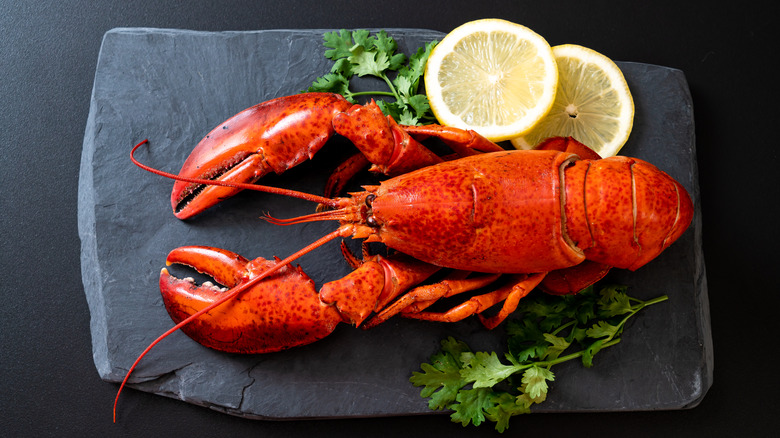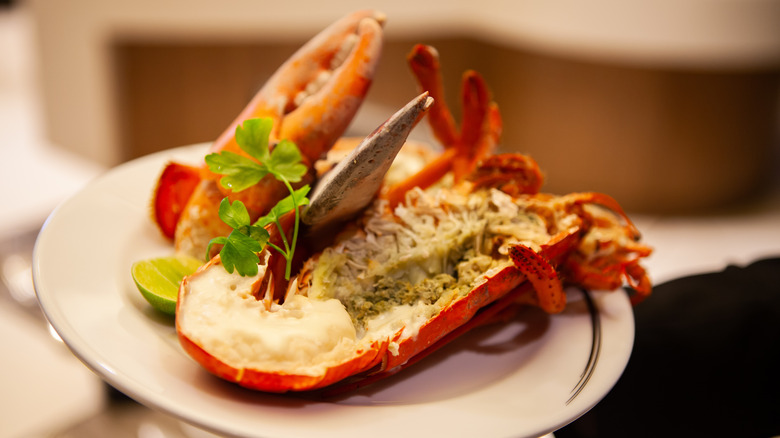Here's What The Green Stuff In Lobster Actually Is
If the seafood restaurant chain were called "Green Lobster" instead of "Red Lobster" would you be more likely to eat there? Most likely not, if you don't know what tomalley is. The idea of a lobster being anything but red might sound off-putting, but according to Allrecipes, lobster with lots of green stuff on the inside is actually considered a delicacy in the culinary world.
If you crack open a lobster and see a green coating on the meat, your taste buds are in for a treat. Also known as tomalley, this greenish paste is the part of the lobster that packs the most flavor, and it tastes like lobster, only a lot richer and more concentrated. From a biological standpoint, tomalley is the hepatopancreas of the lobster, which is essentially the liver and pancreas combined (via Cook's Illustrated). It can be scraped off to add flavor to another dish or sauce, used as a spread like pate, but usually it's just eaten along with the lobster meat.
Is it safe to eat tomalley?
Anyone who cooks shrimp knows that deveining is an important part of the cleaning process. Since the vein is not a vein at all, but rather a part of the digestive system, it's removed along with the shell. Technically, as Cook's Illustrated points out, a lobster's tomalley is part of the digestive system too. The difference is it doesn't contain undigested food and waste like the shrimp "vein." But that doesn't mean it's always safe to eat, especially during a red tide.
According to the National Ocean Service, a red tide occurs when there's a hyper growth of algae. This algae "bloom," as scientists call it, not only turns water red, but releases toxins that can kill fish and make shellfish like clams, oysters, scallops, and mussels dangerous to eat (via Mass.gov). Consuming shellfish from red tide waters can cause paralytic shellfish poisoning, or PSP, which is why shellfish bans are put in place for regions experiencing a red tide. According to Cook's Illustrated, while lobster meat is not affected by the bloom, toxins do accumulate in the lobster's tomalley, which makes it unsafe to eat during a red tide.

